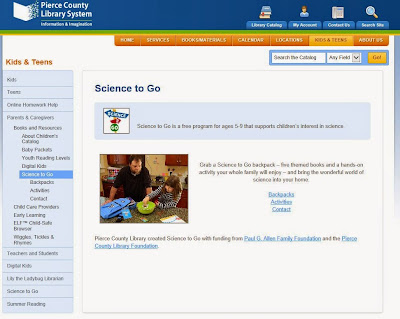Great books about space and the planets
I was doing some work on the nonfiction collection today, focusing on the shelves about astronomy, space, planets and time. While examining the books closely, I came across a few that I want to remember as being really interesting: Faraway Worlds: Planets Beyond Our Solar System , by Paul Halpern and Illustrated by Lynette R. Cook, is a fascinating look at the search for distant planets. It contains simple visual demonstrations of how scientists are able to find stars that have planets--the "wobbling star" is explained with a good diagram about the gravitational pull of a large planet. Halpern's writing is very accessible and Cook's illustrations take the book to another level of imaginative wonder, as she artfully speculates what a beach might look like on a planet with two suns. There is even a page at the end dedicated to explaining how Cook comes up with her illustrations. Really a fantastic and imaginative read. I found a lot of books about the Hubble ...





